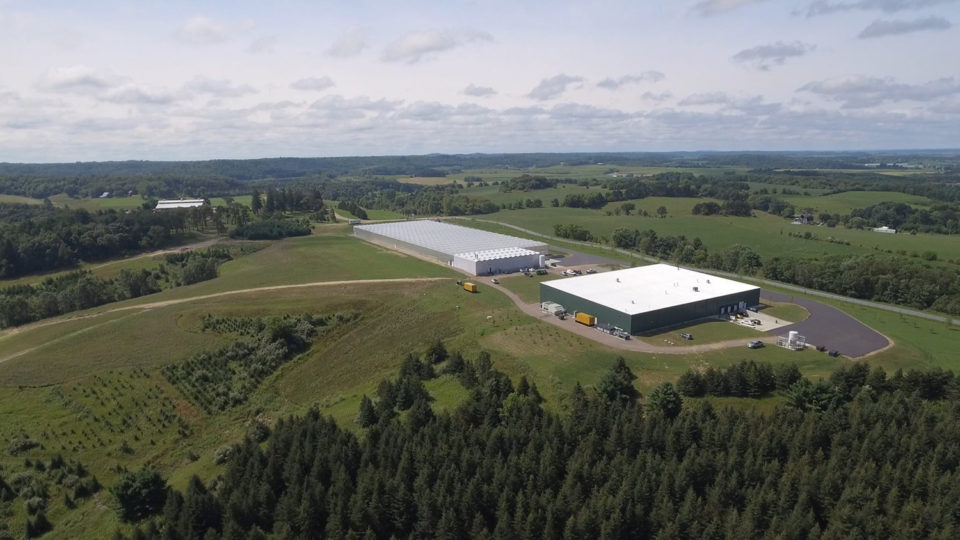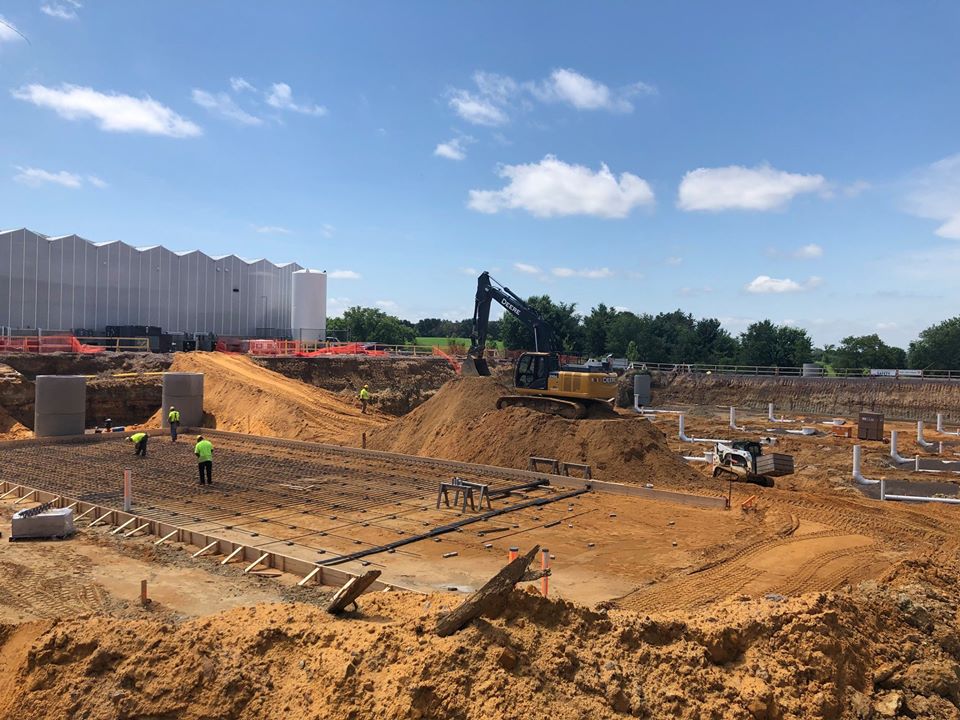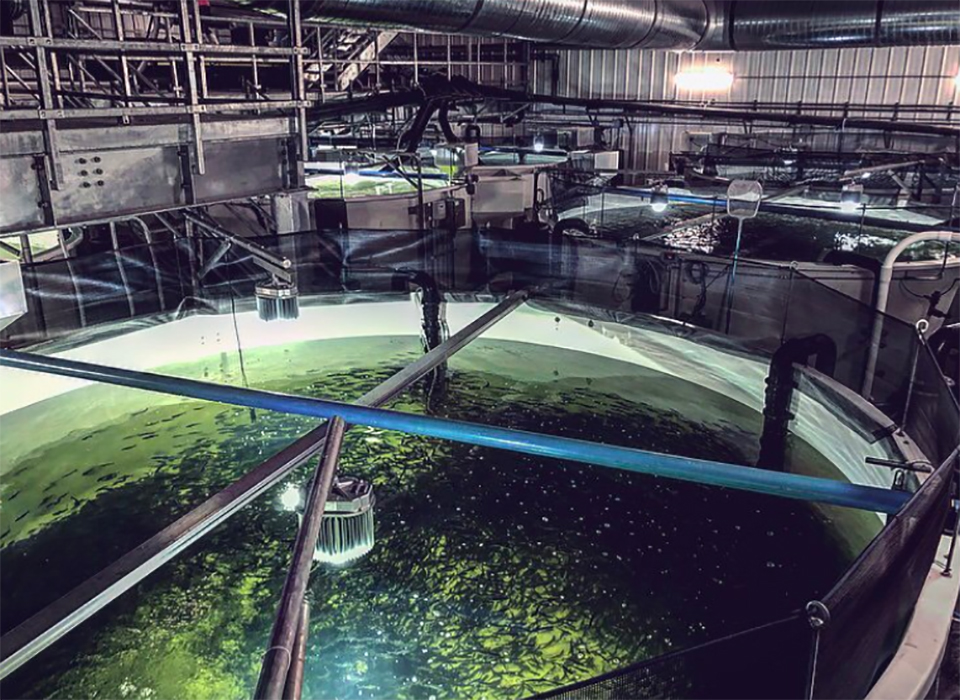Superior Fresh breaks out of the ‘business as usual’ mold; Atlantic Sapphire creating more ‘space’ for salmon

Domestically produced, fresh Atlantic salmon is hitting the U.S. marketplace. That’s nothing new.
What is new is that these fish aren’t from traditional ocean-based farms. They’re from land-based aquaculture facilities in places most people wouldn’t expect.
For industry insiders, the emergence of land-based aquaculture is not too surprising, seen as a response to demand for Atlantic salmon and locally produced food with a low environmental footprint. Despite the considerable expense to build a suitable facility that can produce fish at commercial scale, two prominent producers are making waves with this market-leading species, recirculating aquaculture systems (RAS) and are poised to make an early stand in the United States.
The first RAS producer to bring Atlantic salmon to market did so this past July, when Superior Fresh LLC harvested its first batch at its facility in Northfield, Wisc., a thousand miles from the nearest ocean.
Superior Fresh operates an aquaponics RAS system that produces Atlantic salmon and steelhead trout in conjunction with leafy greens. Its certified-organic produce, fertilized by the fish waste, has been on the market since 2018, but the first yield of market-sized salmon staked the company’s claim as RAS pioneers. In celebration, Superior Fresh announced an expansion plan at its current facility to increase production almost tenfold. Construction is in the works for a new facility that will increase their yield from its current 160,000 pounds (80 metric tons) to 1.5 million pounds (750 MT) annually by 2022.
Atlantic Sapphire is also carving out its position as a leader in U.S. Atlantic salmon production, even though its fish are not yet on the market. The Denmark-based company has a facility under construction outside of Miami, Fla., with some fish already in smolt stage of production. The company expects to harvest its first market-sized yield next summer, with an eye on annual production of about 90,000 MT by 2026.

The successful development and growth plans of these two companies may signal more than just a passing interest in this technology. Despite the increasing influence of aquaculture in global seafood supplies, Steve Summerfelt, chief science officer at Superior Fresh is unsure whether the U.S. aquaculture industry will expand or not, without RAS as a driver.
“I don’t think that our domestic industry can continue with business as usual,” he said. “Fish farm expansion in the United States continues to be challenged by lower-priced imports and constrained by competition for limiting water sources and farm sites, plus a strict regulatory framework.”
These limiting factors, however, can be overcome with technical innovation in production systems, like those that Superior Fresh is putting into play, said Summerfelt. This technology is optimized to “exclude obligate pathogens, capture all of the waste and avoid any discharge from production and processing systems,” he said.
With more than 30 years’ experience in RAS engineering and research, Summerfelt (formerly with The Conservation Fund’s Freshwater Institute in West Virginia) joined Superior Fresh in 2017 and has been a key player in supporting its commitment to environmental stewardship. In conjunction with expansion plans, Superior Fresh has recently conducted several research projects that Summerfelt explained were focused on maximizing product quality and production efficiency while minimizing risk.

Although past the research and development phase, Atlantic Sapphire used its facility in Denmark to work through efforts to de-risk production in preparation for its Bluehouse™ Miami facility.
“It has also served as proof-of-concept that full harvest-sized salmon can be raised at commercial scale out of the ocean,” Johan Andreassen, CEO of Atlantic Sapphire, told the Advocate. “As pioneers in the field, we are overcoming challenges that no one has faced before, and although our Bluehouse technology is unique and different from other RAS facilities, some of the learnings will set precedents for the land-based salmon industry at large.”
Andreassen foresees demand for Atlantic salmon in the United States growing at an average rate of 7 percent through 2031.
“There will be a need for a new supply of Atlantic salmon,” Andreassen affirmed. “We’re not looking at taking the current market share of salmon producers, but to help increase the market and to meet this increasing demand.”
Bluehouse will be the largest RAS U.S. facility once completed, he added. “We raised an additional $90 million in May to increase our target capacity,” Andreassen explained. “We went from a target of 90,000 metric tons in 2026 to a target of 220,000 metric tons in 2031.”
Almost 500,000 MT of salmon are consumed annually in the U.S. market, according to the National Marine Fisheries Service. Once these two companies reach their respective capacity goals, they could theoretically produce enough Atlantic salmon to satisfy roughly half of that amount. But for now, building market demand is crucial for the success of these large-scale operations, and likely the future of the domestic aquaculture industry at large.
Because the customer won’t compromise, we don’t either.
Superior Fresh, which already has product on the market, is building positive consumer perceptions.
“It also helps to gain social license when we never use antibiotics, formalin, or chemical pesticides beyond tiny amounts of salt and hydrogen peroxide; when our fish are non-GMO and their feeds only use non-GMO ingredients; when we don’t seek or require a discharge permit from our production systems that would literally grant a ‘license to pollute’; and when our production methods don’t require any anti-predator plans that would permit killing fish-eating birds or marine mammals. These issues matter,” Summerfelt stated. “Because the customer won’t compromise, we don’t either.”
Atlantic Sapphire is similarly committed to raising only high-quality product and utmost respect for the environment, but Andreassen acknowledges that providing premium product comes with a premium price point.
“On a cost basis, we expect Bluehouse, farming at scale, to be the lowest-cost producer of salmon that reaches the U.S. market. As the cost of transporting the salmon by air is high – between $1 and $2 per kg – this will be a direct cost advantage versus Chilean or European salmon,” he said.
Proximity to market theoretically helps RAS farms compete with the lower costs of imported product, but they’ll be saddled with higher expectations of quality and the responsibility of having minimal impacts on ecosystems.
With RAS technology at a crucial stage of development, several other firms specialized in rearing Atlantic salmon on land are in the works across the country; still others are specializing in species like steelhead salmon (rainbow trout) and sea bass. It’s early days for land-based aquaculture but Andreassen believes the future is bright.
“Coastal salmon farming is limited for various environmental reasons, and salmon demand is only expected to increase,” Andreassen said. “The world needs new ways of producing protein. We’re proving that it’s not necessary to use more coastal space to meet the growing demand of salmon.”
Editor’s Note: The article was amended to reflect the fact that Superior Fresh’s fish have been certified as non-GMO and are raised on feed with no GMO ingredients, not “certified GMO-free” as was originally reported.
Follow the Advocate on Twitter @GAA_Advocate
Now that you've finished reading the article ...
… we hope you’ll consider supporting our mission to document the evolution of the global aquaculture industry and share our vast network of contributors’ expansive knowledge every week.
By becoming a Global Seafood Alliance member, you’re ensuring that all of the pre-competitive work we do through member benefits, resources and events can continue. Individual membership costs just $50 a year. GSA individual and corporate members receive complimentary access to a series of GOAL virtual events beginning in April. Join now.
Not a GSA member? Join us.
Author
-
Jade Silverstein
Jade Silverstein is a seafood professional, aquaculture enthusiast and aspiring journalist. This is her debut contribution to the Global Aquaculture Advocate. She lives in Cold Spring, N.Y.
Tagged With
Related Posts

Intelligence
RAS in the USA: Fad or future?
A rash of large-scale, land-based recirculating aquaculture systems (RAS) are planting their flags on U.S. soil, even though it will take several years and hundreds of millions of dollars of investment before they produce their first sellable fish.

Innovation & Investment
Is RAS the game-changer that Europe’s aquaculture sector needs?
The impact that recirculating aquaculture systems, or RAS, will have on European production remains to be seen, but the general vibe is positive.

Innovation & Investment
Polish RAS salmon farm mixes modern technology with ancient water
Jurassic Salmon, established in Poland just two years ago, is using 150-million-year-old geothermal saline waters from the “Lower Jura” era. Armed with certifications, the company is navigating an awkward growth stage.

Innovation & Investment
Matorka aims to unearth innovation with Arctic charr
A new and ambitious Iceland company is about to construct what it claims will be the world’s largest land-based salmonid farm. What sets Matorka’s Arctic char farm apart is its ability to tap into natural resources unique to the island nation.


